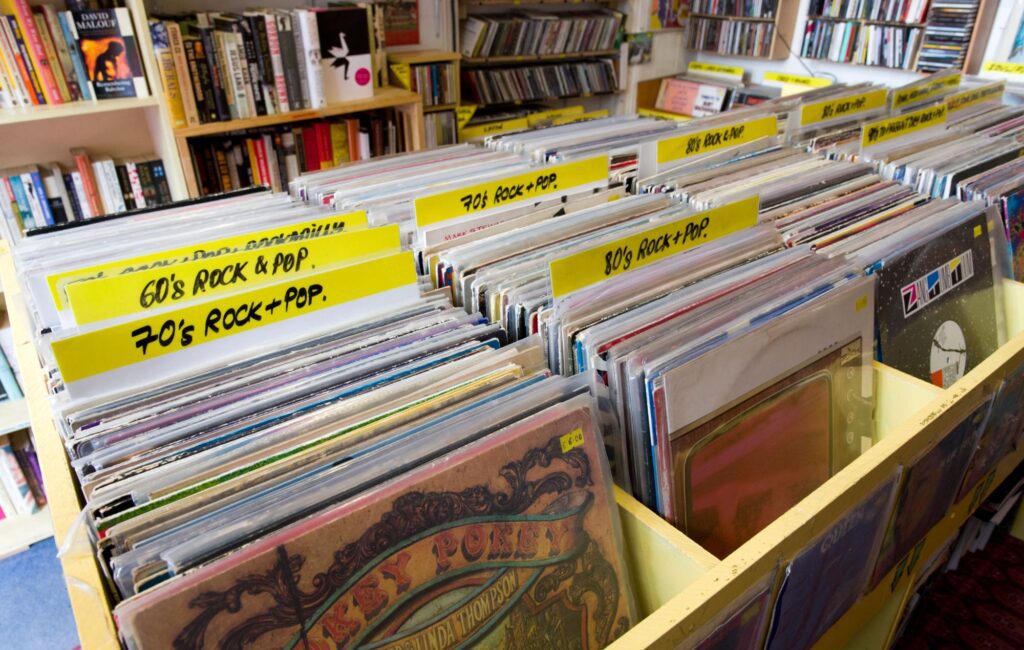UK vinyl sales set to overtake CDs in 2022
Vinyl sales in the UK look set to overtake CDs this year.
That’s according to figures gathered by the Entertainment Retailers’ Association (ERA) – based on unit sales provided by the British Phonographic Industry (BPI) – which show that 2021 sales point to vinyl becoming greater in value than CDs this year.
Music Week reports that while BPI’s 2021 unit sales data showed that CDs remained ahead of vinyl, the latter is poised to become the dominant physical format in terms of revenue.
Vinyl albums brought in £135.6million in 2021 (up 23.2 per cent year-on-year) compared to £150.1million in CD sales (down 3.9 per cent year-on-year). On this current growth trajectory, vinyl will be ahead by the end of this year.

In terms of unit sales, 14.4million CDs were sold in the UK last year (down 10.5 per cent year-on-year) compared to 5.3million vinyl LPs (up 10.6 per cent).
Sony Music UK VP of market planning and sales Charles Wood told Music Week that he believes vinyl will become the largest physical contributor to labels in terms of revenue during the next 12 months.
“Following an uplift of interest in vinyl sales during Covid, we saw that vinyl was being purchased by a broader audience, beyond your music fanatics and niche format obsessives that drove the ‘vinyl revival’,” Wood said.
“We saw continued growth for vinyl sales in 2021 – now making up 27 per cent of the physical market in terms of volume. When you take into consideration a significantly higher price point for vinyl, we will soon see vinyl become the largest physical format in the market in terms of revenue.”
The CD format, however, looks to have a promising future, as NME columnist Mark Beaumont celebrated recently. The unit sales year-on-year decline of 10.5 per cent was not as steep as in previous years, while revenue was down 3.9 per cent due to sales from premium value box sets.
The news follows the revelation that vinyl sales in 2021 were at their highest level for 30 years despite supply issues over the course of the COVID pandemic. 23 per cent of all albums bought last year were on the format, with ABBA‘s ‘Voyage’ being the biggest seller.

More than five million vinyl records were sold – an eight per cent increase on 2020. It also marked the 14th year in a row that the format has increased sales.
Issues such as supply chains and an increased consumer demand has, among other matters, contributed to delays in vinyl.
“Vinyl was growing as a format generally, year on year,” explained Marksberry. “It was all manageable and the factories were able to cope with the demand. Lead times were always longer than with CDs, but it was relatively normal business for everybody. Then around the start of the pandemic, people went into lockdown and couldn’t go to gigs or spend their money on other things, so they started purchasing vinyl online.
“It was February this year that we suddenly saw an exponential demand for vinyl ordering. It went from 10 to 100 per cent in the space of four to six weeks and it kept multiplying. Places that were ordering 2,000 last year were ordering 8,000 this year.
“Then the lead times at the factories starting increasing – it went from four weeks to six week to eight weeks to 16 weeks. Really, the demand just went through the roof in quite a short space of time.”
Adele‘s ’30’ and Sam Fender‘s ‘Seventeen Going Under’ – NME’s Album Of The Year – were some of the biggest sellers on vinyl last year.
Campaigns such as LoveRecordStores, Record Store Day and National Album Day also helped rally sales for independent record shops and specialist chains.





